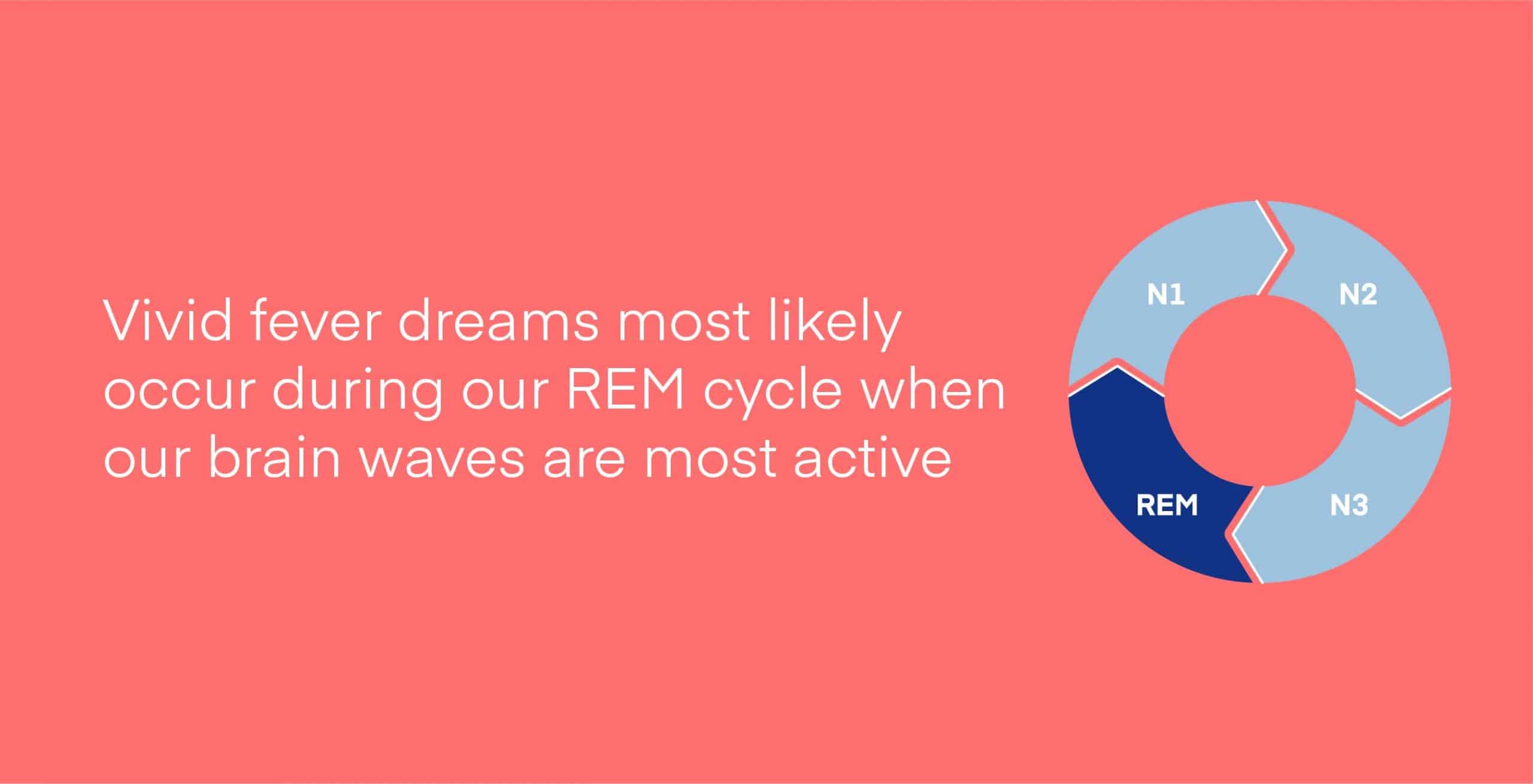Distinctive Characteristics: Dream Vs Fever Prediction

Dream vs fever prediction – Dreams and fevers are two distinct physiological and psychological experiences that share some commonalities yet exhibit stark differences in their defining features. Understanding the contrasting symptoms and mechanisms underlying these two states is crucial for accurate diagnosis and appropriate treatment.
In the realm of dreams and fevers, predictions dance like shadows, tantalizing yet elusive. Some believe that dreams whisper truths, while others see fevers as harbingers of destiny. In this digital age, a new oracle has emerged: wordle nyt.
Its cryptic puzzles and tantalizing rewards echo the ancient rituals of dream interpretation, inviting us to unravel the mysteries that lie within our minds and the world around us. As we navigate the twilight between dreams and reality, wordle nyt serves as a modern-day seer, guiding us towards a deeper understanding of our own subconscious and the enigmatic tapestry of life.
Dreams, a normal part of sleep, are characterized by vivid mental imagery, emotions, and narratives. They typically occur during rapid eye movement (REM) sleep and involve the activation of brain regions associated with imagination, memory, and emotion. In contrast, fevers, triggered by an infection or illness, are characterized by elevated body temperature, chills, sweating, and fatigue. They involve the activation of the immune system and the release of inflammatory mediators.
One cannot predict a dream or a fever. Dreams are like playing wordle nyt , you never know what words will come next. Fever is like a lottery, you never know when it will hit. Both are unpredictable, both are mysterious.
Dreams are a world of their own, a world of fantasy and imagination. Fever is a world of its own, a world of pain and suffering. Dreams are a part of life, a part of the human experience. Fever is a part of life, a part of the human condition.
Physiological Differences
The physiological differences between dreams and fevers are evident in their respective mechanisms. Dreams are primarily a cognitive phenomenon, occurring within the realm of the mind, while fevers are a physical response to infection or inflammation. Dreams do not typically cause physical symptoms, whereas fevers can manifest in various bodily reactions.
When dreams collide with the fever’s grip, predictions dance in the shadows. The battle between Atlanta Dream and Indiana Fever unfolds on the court, where players’ stats ignite the flames of anticipation. Atlanta Dream vs Indiana Fever match player stats reveal the prowess of each individual, fueling the dreams of victory and the fever of defeat.
As the game reaches its climax, the echoes of dreams and fevers intertwine, shaping the destiny of the match.
Dreams are often accompanied by changes in brain activity, such as increased activation of the prefrontal cortex and limbic system. Fevers, on the other hand, are characterized by increased production of inflammatory cytokines and activation of the immune system. These physiological differences contribute to the distinct experiences and symptoms associated with dreams and fevers.
Psychological Differences
The psychological differences between dreams and fevers are equally pronounced. Dreams are often associated with emotions, symbolism, and unconscious thoughts. They can provide insights into our inner workings, desires, and fears. Fevers, in contrast, are primarily characterized by physical discomfort, fatigue, and impaired cognitive function.
Dreams can be vivid and memorable, often leaving a lasting impression on the dreamer. Fevers, on the other hand, are typically accompanied by a sense of malaise and disruption, making them an unpleasant experience.
When the lines between dreams and fever predictions blur, it’s hard to know what to trust. The Atlanta Dream and Indiana Fever face off in a game that could determine their playoff fate. Both teams have been on a hot streak, but only one can come out on top.
Will the Dream continue their winning ways, or will the Fever break their losing streak? The answer lies somewhere between the realm of dreams and the reality of the court.
Conclusion
Dreams and fevers, while sharing some similarities, are distinct experiences with different physiological and psychological mechanisms. Understanding the contrasting symptoms and mechanisms underlying these two states is crucial for accurate diagnosis and appropriate treatment. Dreams provide a window into our inner world, while fevers serve as a warning sign of infection or illness.
Predictive Patterns
Dreams and fevers are two physiological phenomena that have long been associated with health and well-being. While dreams are typically associated with sleep, they can also occur during other states of consciousness, such as meditation or hypnosis. Fevers, on the other hand, are a common symptom of illness, but they can also be a sign of underlying health conditions.
In recent years, there has been growing interest in the potential of dreams and fevers to predict health conditions. This is because both dreams and fevers can provide insights into the body’s physiological and psychological state. By analyzing the content of dreams and the patterns of fever, it may be possible to identify early signs of illness and take steps to prevent or treat it.
Dream Journaling
One of the most effective ways to track dreams and identify potential health patterns is to keep a dream journal. A dream journal is simply a record of your dreams, including the date, time, and a brief description of the dream’s content. By keeping a dream journal, you can start to identify patterns in your dreams that may be associated with certain health conditions.
For example, if you notice that you are having frequent dreams about being chased or attacked, this may be a sign of anxiety or stress. If you are having dreams about falling or losing control, this may be a sign of a neurological disorder. By keeping track of your dreams, you can start to identify patterns that may be indicative of underlying health conditions.
Fever Monitoring, Dream vs fever prediction
Fever is a common symptom of illness, but it can also be a sign of underlying health conditions. By monitoring your fever, you can help to identify potential health problems early on.
The first step in fever monitoring is to take your temperature regularly. You can do this using a thermometer, which is available at most pharmacies. Once you have taken your temperature, record it in a fever log. This will help you to track your fever over time and identify any patterns.
If you have a fever that is higher than 101 degrees Fahrenheit, it is important to see a doctor. A high fever can be a sign of a serious illness, such as pneumonia or meningitis.
Dream Interpretation and Fever Analysis
Once you have identified patterns in your dreams or fever, you can begin to interpret them. This can be done by using a dream dictionary or by working with a therapist. By interpreting your dreams, you can gain insights into your subconscious mind and identify any underlying health issues.
Fever analysis is a similar process. By analyzing the patterns of your fever, you can identify potential health problems. For example, a fever that is accompanied by chills and body aches may be a sign of the flu. A fever that is accompanied by a rash may be a sign of measles.
By interpreting your dreams and analyzing your fever, you can gain insights into your health and identify any potential health problems early on.
Treatment Considerations

The analysis of dreams and the prediction of fevers offer significant implications for treatment strategies. Understanding the underlying causes and patterns of these phenomena can guide personalized interventions, tailoring treatment plans to the specific needs of individuals.
Dream therapy, for instance, utilizes the insights gained from dream analysis to address psychological issues. By exploring the symbolism and themes present in dreams, therapists can help individuals uncover unconscious conflicts, process emotions, and develop coping mechanisms.
Fever Management Techniques
Similarly, fever management techniques play a crucial role in promoting well-being and recovery. By understanding the underlying causes of fever, such as infections or inflammatory processes, healthcare professionals can prescribe appropriate medications or therapies to reduce fever and alleviate associated symptoms.
In addition, lifestyle modifications, such as rest, adequate hydration, and proper nutrition, can support the body’s natural healing processes and enhance the effectiveness of fever management strategies.
Dream and fever, two sides of the same coin, one real and the other imagined. Like the Seattle Storm vs Dallas Wings match player stats , dreams and fevers can be unpredictable, revealing hidden truths and foreshadowing future events. They are both fleeting moments, leaving us with a sense of wonder and uncertainty.